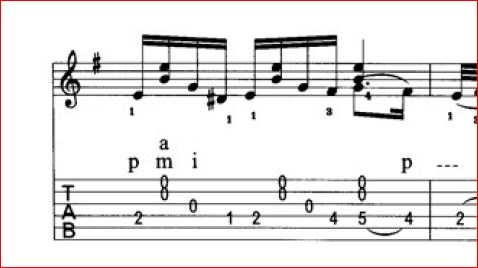|
Ricardo -> RE: Syncopation in flamenco (Jul. 5 2020 17:15:42)
|
Just want to clarify a couple things. There is a general question, specific examples, and general confusion or misunderstanding going on. Of course it can get people’s blood going. I don’t think devilhand means to be so annoying about his questions and follow ups, the best course is to matter of factly state what’s going on and leave it at that.
His first question about traditional vs modern, I think I clarify in my first post. N ricardo. Before him I don’t hear it.
Next his example. The player is not doing traditional playing, he is doing things that only appeared in 70s by PDL and others. So the example is poor. The part in question (count 10-12) is actually synchopated because of the right hand formula...I kept this fact to myself earlier because I didn’t want to get into it...but the right hand formula is also a modern development. The resultant rhythmic sound is NOT syncopated but the feeling the player has is. That’s why I simply said “it’s not really”. Devilhand has a general misunderstanding of how terms “syncopations” or “polymeter” are used by musicians in general and I had hoped my alternative example would kill two birds. I was wrong, oh well.
The rhythm sounding staccato at count 10-12 is a common modern formula. Here it is:
9&, starting on & is rasg ami-i up Such that final i is upstroke on 10. Next pinky left hand mutes or inserts a 16th rest on “e”. Next i down stroke hits & after 10. That off the beat downward strike sets up a syncopated feel in the right hand, as it’s normally down on the numbers, up on the &s. And left hand pinky inserts a rest at “ah”. The reversed feel continues as i comes UP on count 11. Pinky again. Now i down on & but it’s not a completed stroke, just a bass note flick and quick retraction. Pinky again. Finally 12 is a strong down stroke with golpe, returning to normal feel.
So that brief right hand formula indeed has synchopation by its reversed formula up,down,up,down down. But devil wrongly thinking the staccato or 16th rests produced by the left hand were the synchopation which it obviously is not...and I didn’t want to let him get away with thinking I was agreeing to that wrong interpretation, plus the player (recording is 1972, paco using it late 60s) having picked it up from modern playing trends.
Next on the list, he almost understands the N Ricardo falseta synchopation...but then he carries it out to BEAT 4 Negating the entire idea it behind it, or rather proving to us he still doesn’t understand the significance of the falseta. We can simply pray he gets a teacher...perhaps paying $ for information will inspire him to listen to it rather than argue against it???
|
|
|
|

